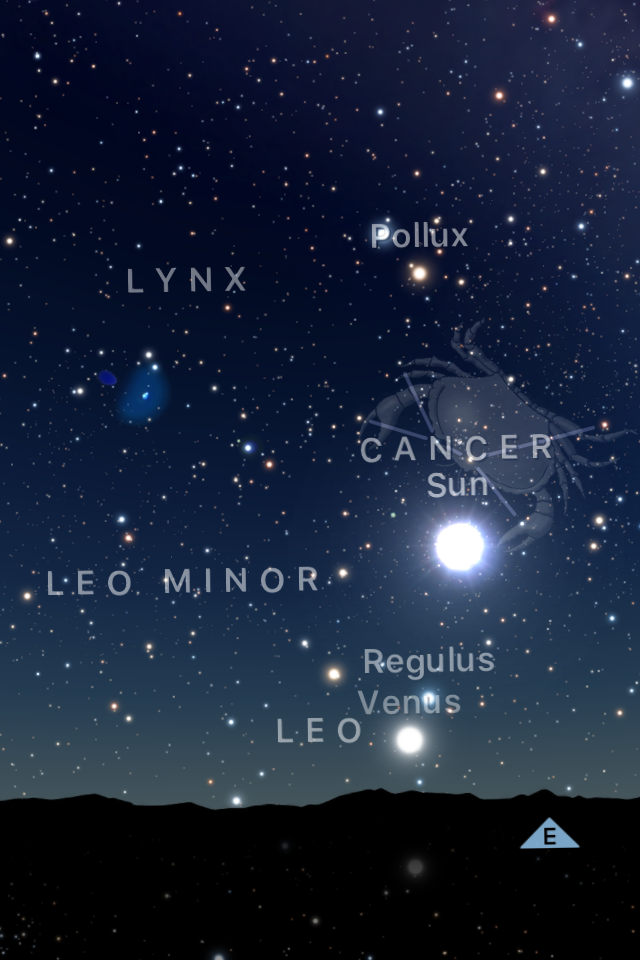Sky Guide
Sky Guide. It’s not free, but the small fee is worth it if you like celestial things. 
Just a quick entry today about an app that I bet most of you have never heard of. Of course, there are plenty of sports apps and things I don’t know about. But this is cool for everyone who has ever looked up at the stars at night and wondered what the heck they were looking at.
This is a screen print from my phone of the app. I took it this morning, as you can see, the sun is in the east, and the sky is dark so you can see the stars. You can’t tell from the screen print, but it shows the constellations, planets, stars in real time. You can also set the time and date for almost any day in the past or future and see what the sky looked like at that moment.
If you tap on an object, such as a white dot, the name of the item will appear and you can tap again for a detailed description, including the type of star, its distance in light years, and its location in degrees and minutes.
If you want to search for something specific, just tap the menu icon and you are given choices of stars, satellites, planets, and more to search for! Tap the Satellites, and select the ISS. You’ll get a quick location and its path in the sky.
It has some ethereal music to go with it, and if you are sky watching, simply hold your device with the camera pointing in the sky. It will automatically orient itself and tell you exactly what you’re looking at. Point it toward a dot in the sky, you’ll discover you’re looking at Jupiter or Venus, or Regulus or Betelgeuse.
But don’t take my word for it. Go to the app store and check it out for yourself. Nothing is quite as fun as hearing a push notification that the ISS is going to be flying overhead in 5 minutes! What are you waiting for, go have some fun!
